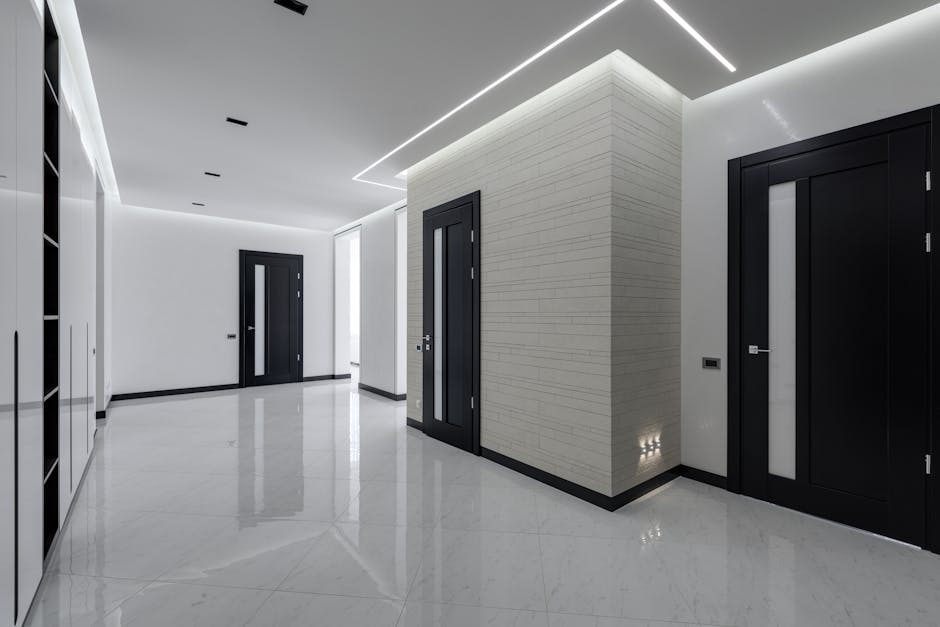On-Site Workplace: A Guide to Employee Experience Design
“In today's competitive job market, offering a positive on-site workplace experience is more important than ever. By implementing effective design strategies and incorporating employee feedback, organizations can create work environments that boost employee engagement, productivity, and overall well-being. ”

The Importance of On-Site Workplace Experience Design
In today's competitive job market, offering a positive on-site workplace experience is more important than ever. Employees are no longer content with simply having a desk and a computer; they expect a workplace that is comfortable, inspiring, and supportive of their well-being.
A well-designed on-site workplace can have a significant impact on employee satisfaction, productivity, and retention. Studies have shown that employees who are happy with their workplace are more likely to be engaged in their work, take pride in their company, and stay with the company for longer periods.
Principles of On-Site Workplace Design
When designing an on-site workplace, there are several key principles to keep in mind:
- Employee-centric: The workplace should be designed with the needs of employees in mind. This means considering factors such as employee preferences, work styles, and well-being.
- Flexibility: The workplace should be flexible enough to accommodate different work styles and needs. This means providing a variety of spaces, such as private offices, open work areas, and collaboration zones.
- Collaboration: The workplace should encourage collaboration and interaction among employees. This means providing spaces for meetings, brainstorming, and team-building activities.
- Technology: The workplace should be equipped with the latest technology to support employee productivity and collaboration. This includes providing access to high-speed internet, video conferencing, and other tools.
- Sustainability: The workplace should be designed with sustainability in mind. This means using eco-friendly materials, reducing energy consumption, and promoting recycling.
Key Elements of an On-Site Workplace
There are several key elements that every on-site workplace should include:
- Welcoming reception area: The reception area is the first impression that visitors and employees have of your workplace. Make sure it is welcoming and inviting.
- Comfortable workspaces: Employees need to have comfortable and ergonomic workspaces in order to be productive. This means providing comfortable chairs, desks, and lighting.
- Collaboration spaces: Collaboration is essential for innovation and productivity. Provide spaces for employees to meet, brainstorm, and share ideas.
- Quiet spaces: Not everyone works best in a noisy environment. Provide quiet spaces where employees can focus on their work or take a break.
- Amenities: Employees appreciate amenities such as a kitchen, a break room, and a fitness center. These amenities can help employees to feel more comfortable and productive at work.
Tips for On-Site Workplace Design
Here are a few tips for designing an on-site workplace that employees will love:
- Get employee feedback: The best way to design a workplace that meets the needs of employees is to get their feedback. Ask employees what they like and dislike about their current workplace and what they would like to see in an ideal workplace.
- Use a variety of space types: Not everyone works best in the same type of space. Provide a variety of space types, such as private offices, open work areas, and collaboration zones, to accommodate different work styles and needs.
- Encourage movement: Sitting at a desk all day can be bad for your health. Encourage employees to move around throughout the day by providing standing desks, walking paths, and other opportunities for movement.
- Let in natural light: Natural light has been shown to improve mood, productivity, and sleep. Make sure your workplace has plenty of natural light.
- Incorporate plants: Plants can help to improve air quality, reduce stress, and boost creativity. Add plants to your workplace to create a more welcoming and inspiring environment.
On-Site Workplace Design: A Case Study

One example of a well-designed on-site workplace is the headquarters of [Company Name]. The company's workplace was designed with the needs of employees in mind, and it includes a variety of features that make it a great place to work.
The workplace has a welcoming reception area with a comfortable seating area and a coffee bar. Employees have access to a variety of workspaces, including private offices, open work areas, and collaboration zones. There are also quiet spaces where employees can focus on their work or take a break.
The workplace is also equipped with the latest technology to support employee productivity and collaboration. Employees have access to high-speed internet, video conferencing, and other tools.
The company's workplace has been a huge success. Employees are happy with their workplace and they are more productive and engaged in their work. The company has also seen a decrease in employee turnover.
Conclusion
Creating a welcoming and engaging on-site workplace experience is crucial for employee satisfaction and productivity. By implementing effective design strategies and incorporating employee feedback, organizations can create work environments that boost employee engagement, productivity, and overall well-being.